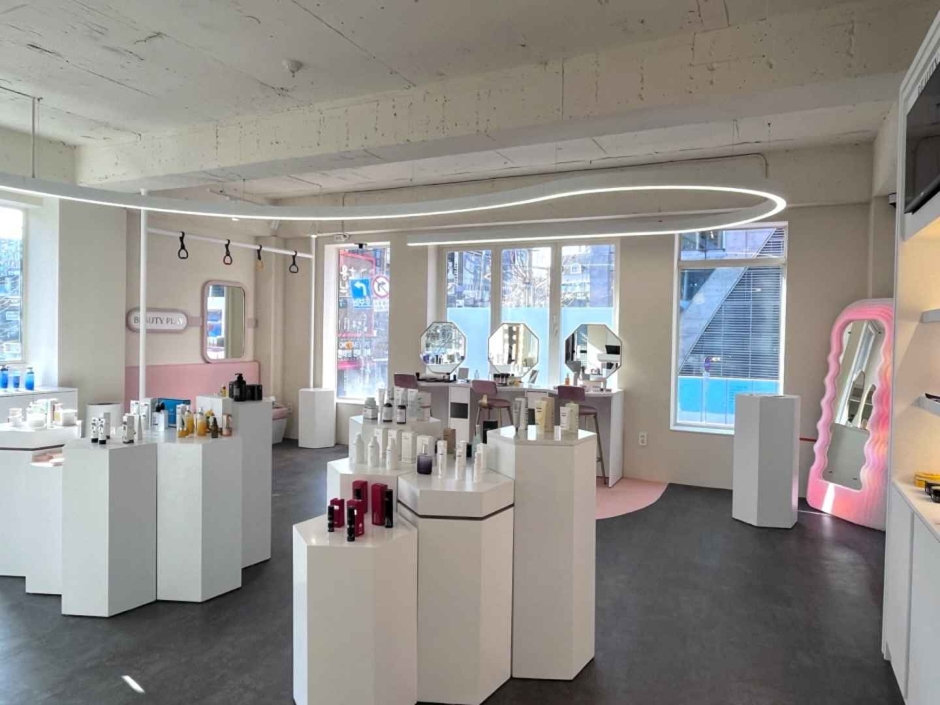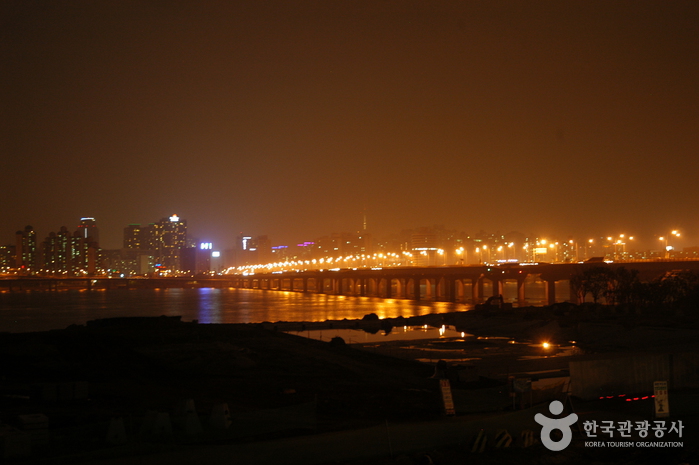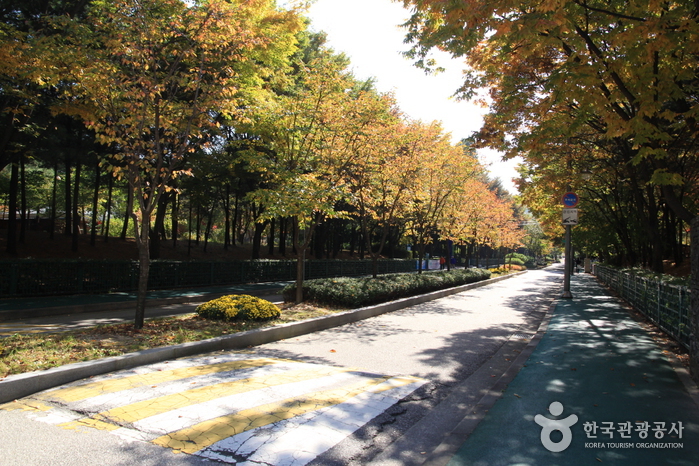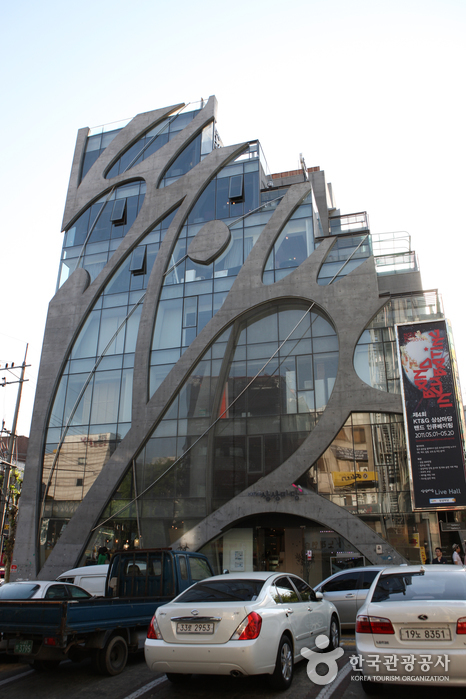Beauty Play Hongdae (뷰티플레이 홍대점)
8.4Km 2024-06-18
16 Jandari-ro, Mapo-gu, Seoul
Beauty Play is a K-beauty experience center operated by the Korea Cosmetics Industry Institute and supported by the Ministry of Health and Welfare. It offers a wide variety of sample Korean beauty products for testing as well as diverse beauty experience programs such as makeup touch-up service (choice of base, eyes, or lips), personal color test, and skin evaluation. Visitors can also ask for product recommendation based on their skin type or skincare concerns. Beauty Play also frequently hosts beauty seminars and one-day classes, which are announced online via its official website. International tourists can apply for a full makeup service with an advance reservation free of charge.
Beauty Play has two branches in Seoul: Myeong-dong and Hongdae. Beauty Play Hongdae is located in Hongdae Street, where visitors can find recent trends, clubs, cafes and delicious foods.
Clinup Dermatology Clinic - Nowon Branch [Tax Refund Shop] (클린업피부과의원노원)
8.4Km 2024-06-28
451, Nohae-ro, Nowon-gu, Seoul
-
Mapodaegyo Bridge (마포대교 야경)
8.4Km 2021-03-26
Mapo-dong, Mapo-gu, Seoul
+82-2-3153-8365
Mapodaegyo Bridge connects Yonggang-dong, Mapo-gu and Yeouido-dong, Yeongdeungpo-gu. The bridge is 1,400 meters long and 25 meters wide (6-lane road), and was the fourth bridge to be built over the Hangang River, following the construction of Hannam Bridge. The construction of the bridge first started in February of 1968 and was completed in May of 1970. At the time of its completion the bridge was named Seouldaegyo Bridge, but was later changed to Mapodaegyo Bridge in 1984.
Bonghwasan Mountain - Seoul (봉화산 (서울))
8.4Km 2022-09-14
Sinnae-ro 21-gil, Jungnang-gu, Seoul
+82-2-2094-2353
Bonghwasan Mountain (alt. 160 meters) in Jungnang-gu, Seoul offers scenic views of Buramsan, Dobongsan, and Namsan mountains. From the mountain, hikers can even see as far as the Yangju area of Gyeonggi-do Province to the north. Officially designated a “neighborhood park” in July 1977, Bonghwasan Mountain has a variety of convenience facilities, not least of which is the beacon tower of Achasan Bongsudae (remolded in 1994) perched on the mountain summit. Also near the summit is Sansingak Shrine, which is the site of the annual Bonghwasan Dodanggut (Intangible Cultural Property of Seoul), a shamanistic rite performed on the third day of the third lunar month.
Sangsangmadang - Hongdae Branch [Tax Refund Shop] (상상마당 홍대)
8.4Km 2024-04-22
65, Eoulmadang-ro, Mapo-gu, Seoul
-
Hongdae Chamsinhan Pharmacy [Tax Refund Shop] (홍대참신한약국)
8.4Km 2024-04-23
1F, 62, Eoulmadang-ro, Mapo-gu, Seoul
-
KT&G Sangsangmadang Arts Space (Hongik University) (KT&G 상상마당(홍대))
8.4Km 2024-03-12
65 Eoulmadang-ro, Mapo-gu, Seoul
+82-2-330-6227
KT&G Sangsangmadang Arts Space is a multifaceted cultural space established in 2007. Spanning 660 meters with a total floor area of 3,366 meters, it features facilities such as a theater, a concert hall, a design square, a gallery, and cafés. It offers opportunities for close engagement with culture. Located near Hongik University Station, it boasts excellent accessibility and attracts many visitors due to its diverse attractions.
Romi Story - Hongdae Branch [Tax Refund Shop] (로미스토리 홍대점)
8.4Km 2024-04-18
23, Wausan-ro 17-gil, Mapo-gu, Seoul
-
Olive Young - Sangsu Station Branch [Tax Refund Shop] (올리브영 상수역)
8.4Km 2024-04-18
Store #101, 1F, 49, Wausan-ro, Mapo-gu, Seoul
-
Seongsu-dong Cafe Street (성수동 카페거리)
8.5Km 2024-10-28
Seongsu-dong, Seongdong-gu, Seoul
Yeonmujang-gil in Seongsu-dong, known for old factories and a shoe workshop street, has been reborn as a place of trendy cafes and culture. The energy of car repair shops, printing factories, and handmade shoes street still exist today but, as global restaurant brands, select shops, and cafes have set up amidst busily operating factories, an atmosphere unique to Seongsu-dong has been created. "Daerim Warehouse" led to the change in the Seongsu-dong streets and can be said to be the originator of all warehouse-style cafes that are popular throughout Cafe Street today. The red-brick structure, antique signboards, and a vast indoor space of an old warehouse have been maintained and, with the addition of a sensuous interior design, it has become a space suitable for fashion shows and exhibits, thus showing new potential for old Seongsu-dong architecture. Every day, new cafes, bakeries, restaurants, and cultural complexes open their doors and are busy welcoming visitors.

![Clinup Dermatology Clinic - Nowon Branch [Tax Refund Shop] (클린업피부과의원노원)](http://tong.visitkorea.or.kr/cms/resource/16/3312816_image2_1.jpg)


![Sangsangmadang - Hongdae Branch [Tax Refund Shop] (상상마당 홍대)](http://tong.visitkorea.or.kr/cms/resource/97/2887997_image2_1.jpg)
![Hongdae Chamsinhan Pharmacy [Tax Refund Shop] (홍대참신한약국)](http://tong.visitkorea.or.kr/cms/resource/53/2890653_image2_1.jpg)

![Romi Story - Hongdae Branch [Tax Refund Shop] (로미스토리 홍대점)](http://tong.visitkorea.or.kr/cms/resource/57/2890557_image2_1.jpg)
![Olive Young - Sangsu Station Branch [Tax Refund Shop] (올리브영 상수역)](http://tong.visitkorea.or.kr/cms/resource/10/2889110_image2_1.jpg)

 English
English
 한국어
한국어 日本語
日本語 中文(简体)
中文(简体) Deutsch
Deutsch Français
Français Español
Español Русский
Русский